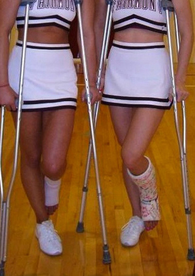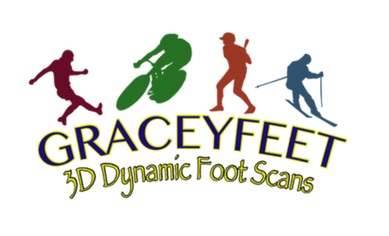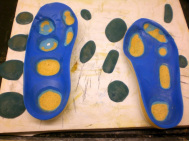 Cheerleading is often overlooked as an injurious sport and scant studies have focused on the mechanisms and incidences of injuries. But the reality is that cheerleading has evolved over the past century-and-a-half from a pep-group chanting in the bleachers to a competitive combination of high-impact dance and extreme-skill performance sport: filled with high-flying stunts and dangerous skills. Cheerleading has quickly become one of the most necessarily accurate professional sports due to the advancement of trick stunts and the subsequent improvements in training practices. In order to pull off those high-flying moves, athletes must train daily at intensities formerly reserved for the team sports they cheer for. Thus, they are subject to common over-training injuries which include ligamentous sprains, muscular strains, fractures, and contusions. Dr. Jay Greenstein, CEO of Sport and Spine Companies in the Washington, DC area and a leader in the chiropractic industry at the national level offers his insight: “Cheerleaders suffer lots of lower extremity injuries. A 2012 study published in the Journal of Trauma and Acute Care Surgery revealed that lower extremities injuries made up approximately 30% of all cheerleading injuries seen in the emergency room over a 5 year period. A study published in the American Journal of Emergency Medicine reported that an even higher rate of lower extremity sprains and strains at 42% of total injuries occurring. Athletes should be aware that muscle compensations due to injuries of this nature create postural imbalances that can go unnoticed resulting in alignment issues that have a deeper affect on a person's performance and safety. An early evaluation for orthotic need can assist in reducing the risk of posterior tibial tendon, achilles tendon, and peroneal (fibularis) sprains and strains. In 2011, Franklyn-Miller, A,et.al. found the use of customized foot orthoses during training for those assessed as being at-risk resulted in a 20% reduction in lower limb overuse injury rate. Stabilizing the body through guided and controlled rehabilitation, skeletal manipulation, and orthotic use can keep the body aligned, improve sensorimotor control, and maintain better balance. Dr. Greenstein continues:"While functional elements of muscle imbalances, prior injury, and thus poor sensorimotor function are key variables of this epidemic, we also realize that there are anatomic variables that must be addressed. In a study published in the Clinical Journal of Sports Medicine, the application of a custom foot orthoses “have an immediate effect on (lower extremity) dynamics.” So, in thinking about prevention first, having a pre-emptive evaluation to determine the need for a custom orthoses to improve lower extremity dynamics and function, and reduce the risk of injury, is a worthwhile endeavor.” A cheerleading-specific lower extremity evaluation will include objective measures of range of motion, strength, spinal alignment, pelvic obliquity, leg length discrepancy, knee alignment, hindfoot alignment, plantar fascia patentcy, sub-talar joint axis, navicular drop, flexor hallucis congruency, heel-ball ratio, and forefoot to hindfoot alignment during static and weightbearing sport maneuvers. In fact, these elements are necessary to fabricate the most appropriate device for any person seeking to improve their performance through balance and injury prevention. Notes on Cheerleading injury incidence and prevention In 2002, the Journal of Pediatrics published an epidemiological review of cheerleading injuries in children from 1990-2002. The authors found the body parts injured were lower extremity (37.2%), upper extremity (26.4%), head/neck (18.8%), trunk (16.8%), and other (0.8%). Injury diagnoses were strains/sprains (52.4%), soft tissue injuries (18.4%), fractures/dislocations (16.4%), lacerations/avulsions (3.8%), concussions/closed head injuries (3.5%), and other (5.5%). Children in the 12- to 18-year age group were more likely to sustain strains or sprains to the lower extremity than 5- to 11-year-olds (P < .01; RR: 1.62; 95% CI: 1.50–1.88). Since this land-mark paper was published, catastrophic injuries in cheerleading has continued to rise. The latest information (Oct 2012) shows the number of catastrophic injuries related to cheerleading has increased from 1.5 annually from 1982 to 1992 to 4.8 per year from 2003 to 2009 according to the American Academy of Pediatrics. Catastrophic injuries include closed-head injury, skull fractures and cervical spine injuries resulting in permanent brain injury, paralysis or death. New recommendations in the guidelines of injury prevention in cheerleading have just been released and include:
Thank you to Dr. Jay Greenstein for his contribution to this article. http://www.ssrehab.com/ Council On Sports Medicine and Fitness. Pediatrics. 2012;doi:10.1542/peds.2012-2480. J Physiother. 2011;57(3):193. Foot orthoses can reduce lower limb overuse injury rate.Landorf KB. SourceLa Trobe University, Australia. PEDIATRICS Vol. 117 No. 1 January 1, 2006 pp. 122 -129 (doi: 10.1542/peds.2005-1139) American Academy of PediatricsPolicy Statement: Cheerleading Injuries: Epidemiology and Recommendations for Prevention
4 Comments
Kate
11/10/2012 01:46:36 am
I sent it on to the cheer coach.....very good article.
Reply
It's interesting to know that there are many elements wherein it would be necessary to get the most appropriate device to prevent injuries to get treatments. I wonder if an urgent care medical clinic would be able to provide such services to those who have been in an accident on any kind of incident. In my opinion, any medical facility should definitely be prepared to cater to patients with various problems to save their lives or to get them the best chances of having a normal life again.
Reply
https://calgarypodiatry.ca/
4/3/2023 07:53:57 pm
Thank you for this information. Indeed, this is helpful. If you want to know more about foot problems, treatment, and foot surgeries. You can visit this site https://calgarypodiatry.ca/
Reply
4/9/2023 10:28:16 pm
Awesome! Thank you for this essential information. I highly suggest this site also, you can gain more information.
Reply
Leave a Reply. |
Chris Gracey MPT, Cped
Archives
October 2015
Categories
All
|
Follow Graceyfeet on Facebook and Twitter


 RSS Feed
RSS Feed
